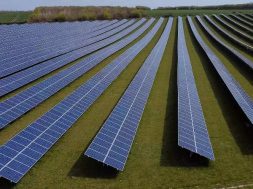
PV Price Trends to Diverge Between China and Other Regions This Third Quarter as the U.S. Decides on Suniva’s Petition
The latest PV market analysis by EnergyTrend, a division of TrendForce anticipates falling prices across the supply chain this July, but the overall decline will not be as steep as the one occurred in the same period a year ago. Though the Chinese government will implement a cross-board subsidy reduction at the end of June, some of the country’s PV projects have a temporary reprieve. Furthermore, China’s solar demand is still being supported by installations related to the Top Runner Program and the PV Poverty Alleviation Project. These factors will moderate the price decline during the early third quarter.
Currently, the consensus in the market is that both prices and costs will start to drop after June. While China will see noticeable price decline in the third and fourth quarter, price trends in other market could develop differently on account of Suniva’s petition to the U.S. International Trade Commission (abbreviated here as ITC). Prices in Taiwan and markets outside China, for instance, may go up against the general demand headwinds.
Third-quarter price decline will be milder than initially expected as Suniva’s petition has caused module orders from the U.S. to surge
At the end of this April, U.S. solar cell maker Suniva petitioned to ITC for relief against foreign imports under Section 201 of the Trade Act of 1974. Specifically, Suniva asked the U.S. government to impose tariffs and a minimum import prices on all PV cell and module imports. Since the U.S. now accounts for 13% of the global demand as the second-largest market, ITC’s ruling on this case poses an enormous risk to the entire industry.
Before the outcome of the petition will be formally announced this September, PV product suppliers and solar power plant operators are aggressively stocking up and pulling orders ahead as precautionary measures. As a result, there is a rush of orders from the U.S. Furthermore, EnergyTrend has raised its forecast of capacity utilization rate of the entire global PV industry for this third quarter from 60% to 80%. Therefore, prices across the supply chain will not be falling as sharply as originally anticipated as the market goes into the second half of 2017.
AD/CVD measures are causing price trends to vary in different markets and keeping factories outside China running at full capacity
The U.S. has already implemented a series of antidumping and countervailing duties (AD/CVD) against Chinese solar imports since 2012. In the short term, AD/CVD will give a competitive edge to solar companies that have their cell and module manufacturing located in countries unaffected by the trade barrier (e.g. Vietnam, Malaysia, Thailand and South Korea).
As for Taiwanese PV suppliers, the lowering of their antidumping rates to the 3.5%~4.2% range will have to wait until this September, when the U.S. government will be issuing the final decision to their case. In the meantime, Suniva’s petition has led to the surging U.S. demand that is crowding out the European demand. Taiwanese PV suppliers therefore can sustain themselves by addressing the needs of European customers. Also, Taiwan-based Gintech, Neo Solar Power and Tainergy have already circumvented AD/CVD by setting up manufacturing capacity in other countries.
On the whole, AD/CVD together with Suniva’s petition are forcing demand for PV products to be met by non-Chinese supply sources. This in turn will lead to further variation in prices according to the status of the exporting countries.
ITC’s review of the Section 201 safeguard has also spurred production outside China. EnergyTrend has found that cell and module plants in countries unaffected by trade barriers were starting to operate at full capacity in the middle of this May. The market at that time was more focused on the tightening supply caused by the robust demand from China. By the beginning of June, however, order volumes and prices were noticeably different between China and other countries.
At present, the order visibility for Chinese PV suppliers is extended to early July, and quotes for July shipments are starting to weaken. As for suppliers from Taiwan and countries not covered by AD/CVD, their order visibility is extended to August and quotes for their July shipments are still on the rise. In a way, ITC’s review of the Section 201 safeguard is helping to buttress prices of non-Chinese solar products.
Price downtrend in China will become noticeable in July after the subsidy reprieve for major projects has expired
The latest market outlook for this third quarter indicates the price decline in the wafer section of the supply chain will be relatively small because AD/CVD does not cover wafers and Chinese suppliers can ship their wafers to facilities in other countries. There is even a chance that prices of Chinese wafers in overseas markets will go up due to strong demand.
On the other hand, China’s PV industry will see a more noticeable price decline in the domestic market later in July after the subsidy reprieve for some major projects has ended. Production facilities in Taiwan and countries unaffected by AD/CVD will be struggling to meet the rush of demand from the U.S. Prices of these non-Chinese PV products will remain high until this September. By that time, ITC’s ruling on Suniva’s petition and the growing wafer exports from China (following drop in domestic demand in later July) will become important factors that influence prices.













